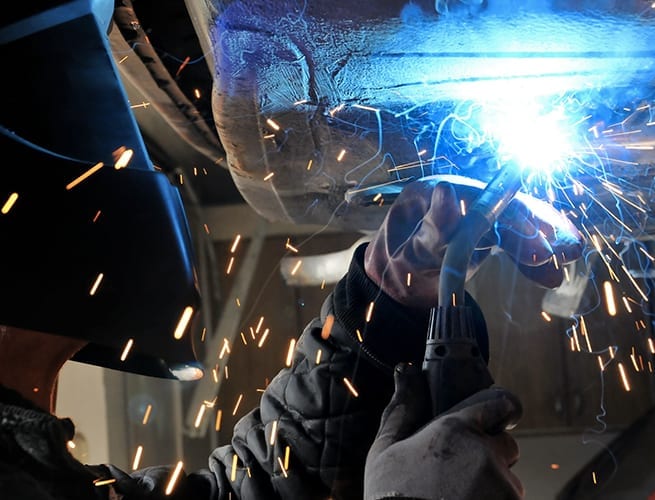How business performance and OEM Certification can aid in future success.
To be a top performer, collision repairers need to adapt to change, and accept that the future will be much different from the past. It means dealing with the fastest rate of change the collision industry has ever faced. It means embracing a new partner in the collision repair process—the OEM.
The future will belong to repairers who evaluate their businesses, adapt to the new conditions, and put the customer first by ensuring every vehicle is properly repaired; that safety features are restored; that costs are managed; and that customers are provided with exception service. I believe many owners are at a crossroads—it’s time to invest in their business, or decide on an exit strategy that meets their needs. The future is here, and there is a huge opportunity for those who choose to adapt.
There are a number of key factors that are creating today’s market conditions:
Complexity. New vehicles are more advanced than ever, with new materials, construction methods, electronics, connectivity, sensors, and safety features. As a result, collision repairs are becoming ever more complex. This means shops must stay current by investing in training, equipment, and information.
Claims Frequency. Experts predict that claims frequency will decrease significantly over the next 10 years, while claims severity will increase. This may sound like doom and gloom, but in reality, the shops that are qualified and equipped will remain profitable, and those who are not may exit the industry.
OEM involvement. OEMs are getting involved in collision repair. There are a number of reasons for this, but the top reason is brand protection. They realize that collisions are part of their customer’s ownership experience, and they want to ensure that collision repairs are done right. They want every vehicle returned to OEM specifications, and a great customer service experience for their drivers.
Source of referrals. As OEMs are more involved in collision repair, their influence on where a vehicle is repaired will increase. Others are marketing their OEM certified shops to consumers directly—even before an accident occurs. In a perfect world for consumers, OEMs and insurers will be recommending the same repair facilities to their shared customers.
Business Performance. As insurers begin to be more aware of the specialized needs for collision repairs of current and future models, shops can differentiate themselves by aligning with OEMs and becoming certified. This does not mean, however, that business performance and meeting insurer KPI’s are not important. Shops that will lead in the future will be the most qualified, OEM certified shops, who are the best performers, delivering a safe repair to OEM specifications, containing costs, and delivering repairs in a timely manner.
For shops that are wondering how to move forward, there are many options. Many suppliers offer programs, coaching and advice on how and where to invest in your business. Look for programs that help shops chart their path to OEM Certification and provide assessment on industry best practices. And becoming certified with any of the OEMs operating Canadian programs will ensure you have the right tools, equipment, training and facilities to repair cars right. The best way to make the right decision for your business is to research options, evaluate your business and sales mix, talk to industry stakeholders, and then invest in options that will provide you with a return on your investment.



